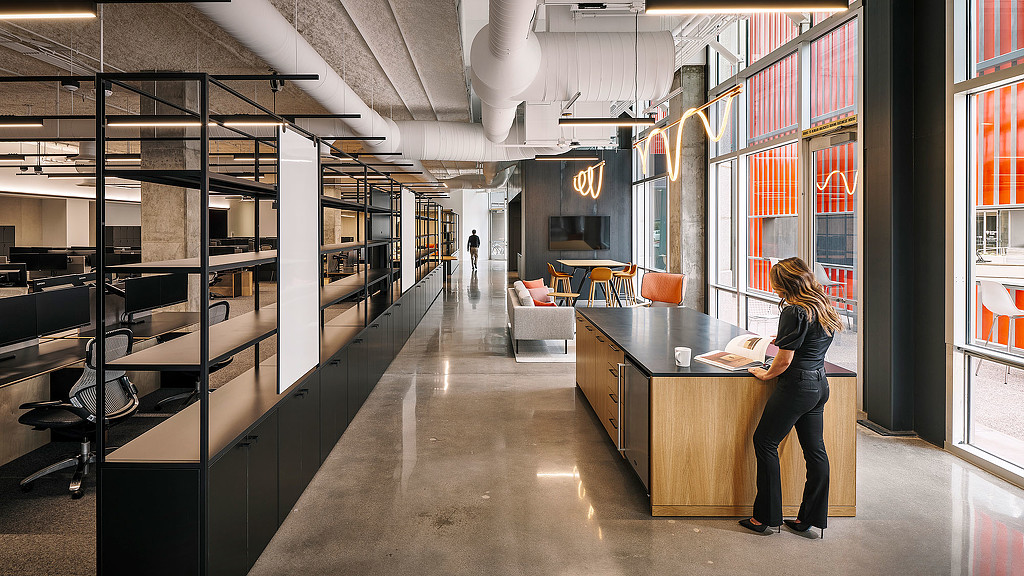5 Trends CRE Leaders Can Use to Reimagine a New Workplace Reality
November 07, 2021 | By Janet Pogue McLaurin, Natalie Engels
For many, work is no longer a binary choice between working from home or the office; it’s far more complex. Workers’ expectations have changed, and that’s shifting how and where people work. And with these changes, commercial real estate leaders are evaluating what’s best for their organizations to drive business performance, innovation, and employee engagement.
The Gensler Research Institute’s latest workplace research found that top-performing companies and younger generations have a different conception of the role of the office and how the workplace should support work. So, what do these changing expectations mean for the future of the workplace?
On Oct. 27, a panel of Gensler thought leaders convened for an interactive session, “Emerging New Workplace Realities,” exploring current work expectations and future real estate implications.
Here are five trends that these panelists uncovered that are driving the future of the workplace:
1. The employee experience is the new differentiator.
Workplace design teams and employee support teams have always worked together to deliver space — but now, the focus is not just on delivering space, but on delivering a great employee experience. It’s critical that organizations make that employee experience seamless and equitable for those working in the office, remote, and everywhere in between. Companies will have to invest in technology tools within and outside the office to make work an equitable experience for everyone; and their talent will expect it. Rather than perks or amenities, companies should focus on equity, wellness, and purpose to draw top talent and give people a reason to come into the office.
2. Experimentation is key; prototypes and pilots are the new normal.
Top-performing companies are testing how they can use existing space to create real value for workers when they return to the office. Mockups and pilot projects are gaining traction across industries. We’re testing flexible, team-based approaches and making strategic interventions to overhaul or repurpose key areas, such as meeting and collaboration spaces, to respond to this new paradigm. Testing has major design implications — instead of making broad, wholesale changes, it’s about being iterative and making small, incremental changes so that you know you are getting it right for your company. Piloting is complex — it’s requiring new ways of working within organizations and new partnerships. A key piece of successful piloting is to research, test, and measure.
3. Real estate is changing in a hybrid/work anywhere era.
The pandemic has flipped traditional real estate paradigms. Private sector clients are looking to maintain or grow their portfolios, while institutional public sectors, like government, healthcare, and education, are looking for efficiencies and new purposes for underutilized space. In the tech industry, large companies are taking advantage of the pause in rapid expansion of space and using this moment to transform their global portfolios. Smaller or emerging clients are rethinking their real estate models, looking at decentralized hub-and-spoke models, for example. This is impacting recruitment strategies, allowing companies to cast a wider net.
4. Leadership sets the tone to bring people back. Listen, model, and learn.
To bring people back to the office, leadership should set the tone, modeling behaviors, and providing cultural moments and learning opportunities that people have been missing. We’re working with leaders to bring in their teams when they are in-office and testing new team/neighborhood approaches. We’re seeing an open dialogue start to include not just management, but also the CEOs, CTOs, and CIOs in large-scale firms. It’s critical that leadership listens to employees and understands what they’re looking for and what they need to do their best work from any location.
5. Learning and development is the next amenity.
Learning and development of team members is a central reason to bring people back to the office. This is impacting workplace design. Companies are using large event spaces for group training to give employees an opportunity to learn together — something we’ve been lacking over the past year. We're bringing the offsite onsite, and reevaluating what functions happen in the neighborhood or ‘clubhouse’ so that development may happen in multiple locations.
What solutions can help guide commercial real estate leaders as they reimagine a new workplace reality? The panelists concluded with these words of advice: Listen. Prototype. Integrate. And ultimately, be flexible.
For media inquiries, email .


